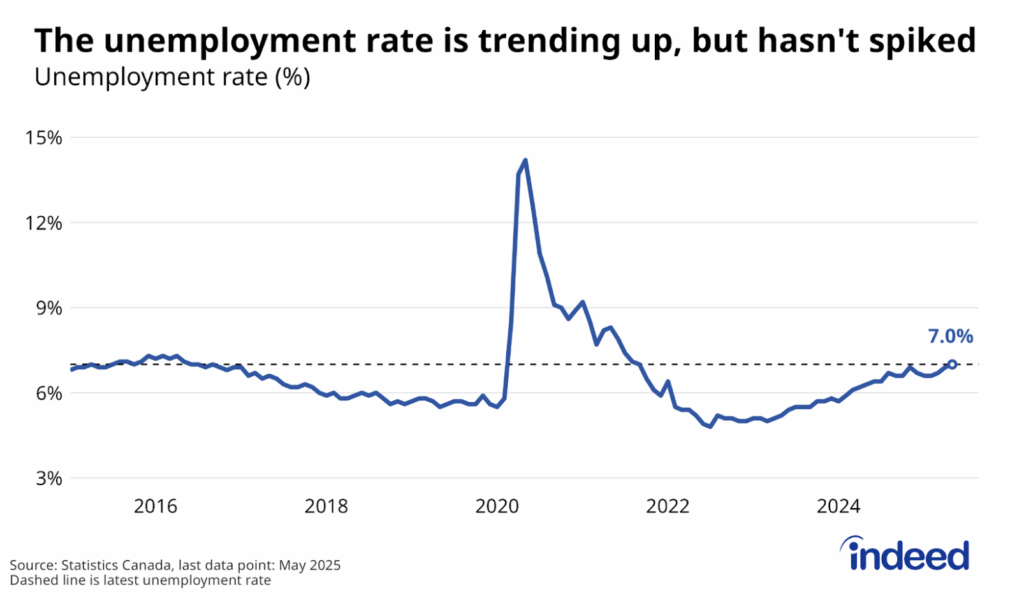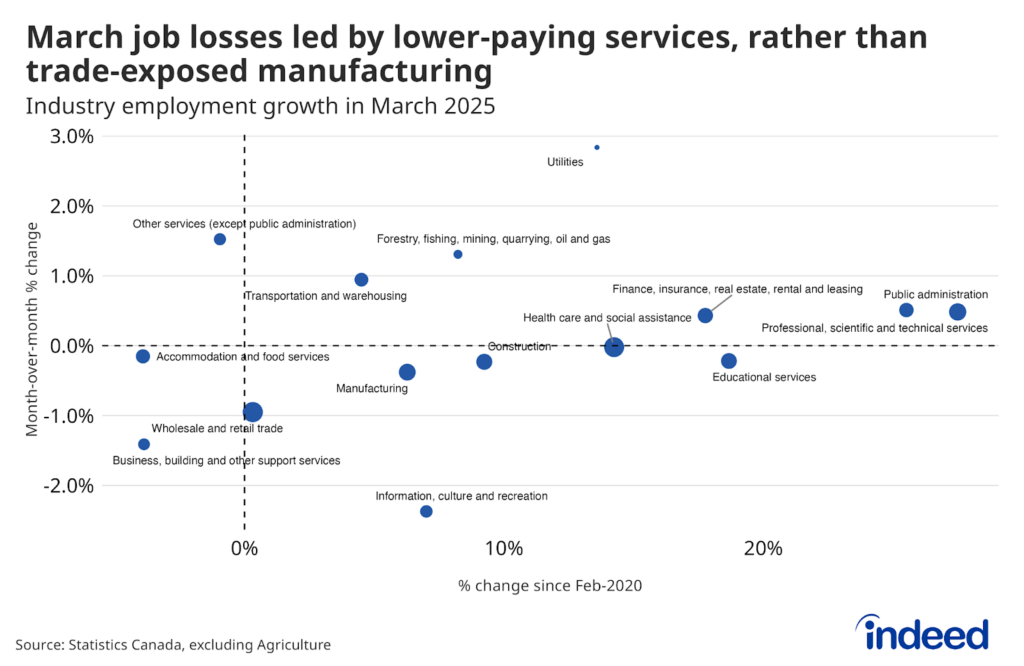Key Points
- The share of Canadians actively looking for work rose in October, from 25% to 30%, led by a substantial increase in job search activity among those out of work.
- Unlike prior months, most unemployed job seekers in October described their job search as “urgent”, with particularly large shifts in urgency among older job seekers, and those who’d been looking for an extended period.
- The rise in reported urgent search coincides with the wind-down of certain pandemic-era jobless benefits, but it’s too soon to assess this shift’s broader labour market impacts. If the increase persists, it could be a sign of deteriorating household finances among Canadians out of work.
Canadian job search activity picked up in October according to the latest Indeed Job Search Survey. Overall, 30% of adults aged 18 to 64 surveyed between October 11-20 reported actively looking for work, a statistically significant increase from the 25% on the job hunt in September. While a majority of job seekers continued to describe their search as non-urgent, it was urgent searchers who drove most of the October increase.
The October rise in job search activity was led by those not working. The share of non-employed Canadians actively looking for work jumped from 32% to 39%, all of the statistically significant increase driven by urgent job search. As a result, a majority (57%) of unemployed job seekers in October indicated their search was urgent, in contrast to prior months. Meanwhile, the share of employed workers on the job hunt also rose by a statistically significant margin, reversing their decline between July and September.
One reason the October rise in urgent unemployed job search stands out is because it occurred shortly after changes in eligibility for Employment Insurance, and just before the wind-down of the Canada Recovery Benefit on October 23. Search urgency made particularly large jumps among respondents over age 35, as well as those who had been looking for work for over six months.
So far, neither the October Labour Force Survey nor recent changes in relative job seeker interest on Indeed have shown signs of substantial shifts associated with a jump in urgent job search. It might be too soon for these changes to show up in employment outcomes, or the types of jobs Canadians are clicking on. That said, given financial difficulties are a common reason for urgent job search, whether the jump in job seekers searching urgently persists will be a potential warning indicator of increased financial strain among those out of work. This would magnify the stakes in reducing the number of Canadians who’ve been jobless for extended periods.
Methodology
This blog post is based on separate online surveys of 4,000 Canadian adults ages 18-64 conducted on July 15-20, August 9-23, September 13-29, and October 11-20. The survey was conducted among various general population survey panel audiences. Indeed awareness, use, or otherwise was not a requirement for participation. There was no mention of Indeed or any other job sites in the survey and respondents were not aware that the survey was sponsored by Indeed.
Weights were applied to match respondent distributions across age, educational attainment, and time spent in Canada with the Labour Force Survey public-use microfile data from January 2021 through June 2021.






